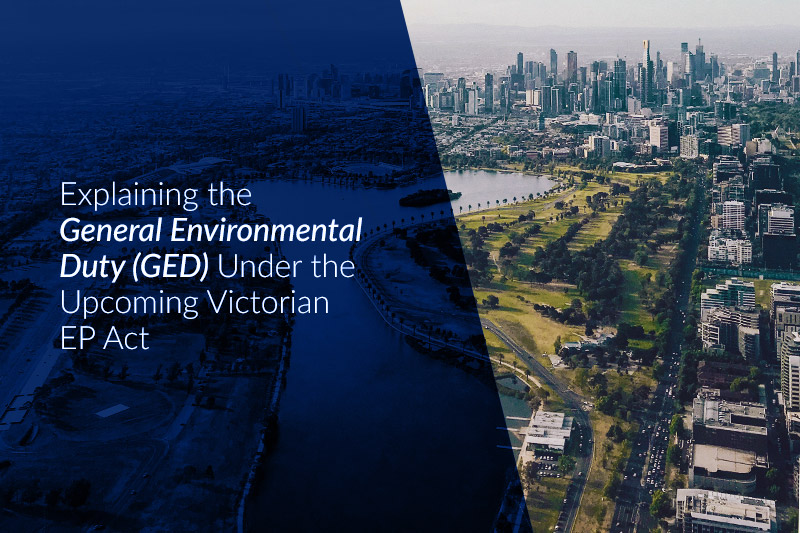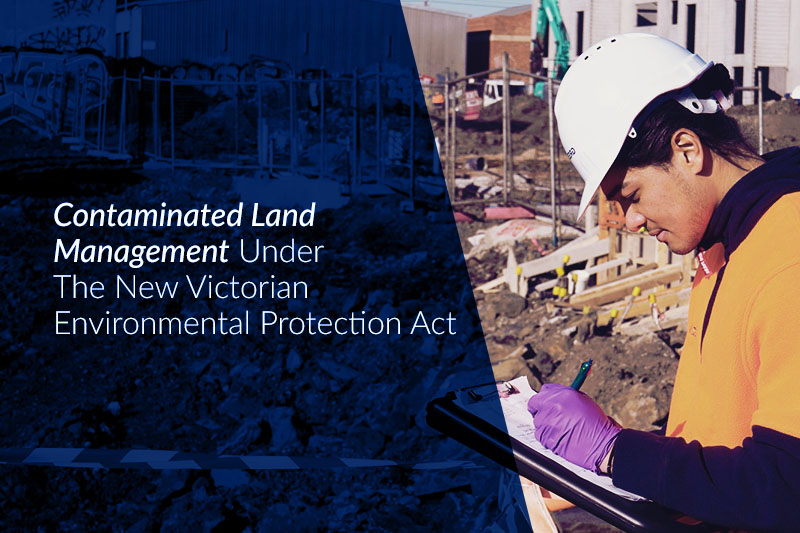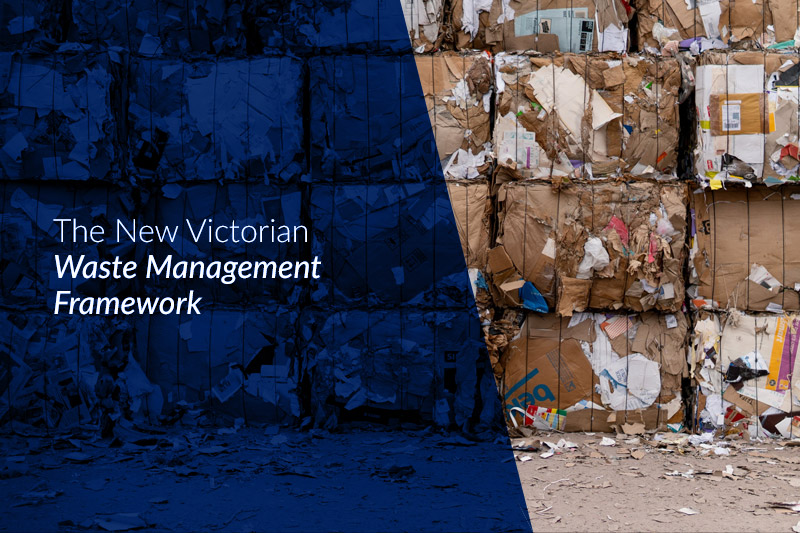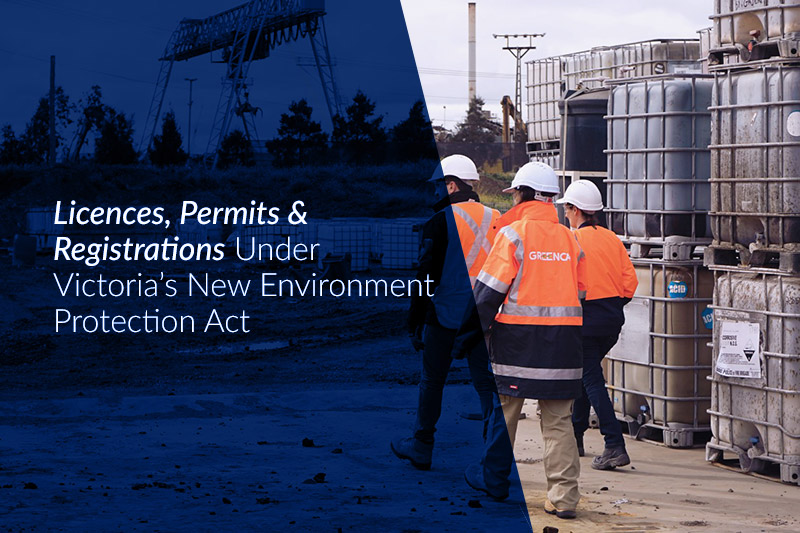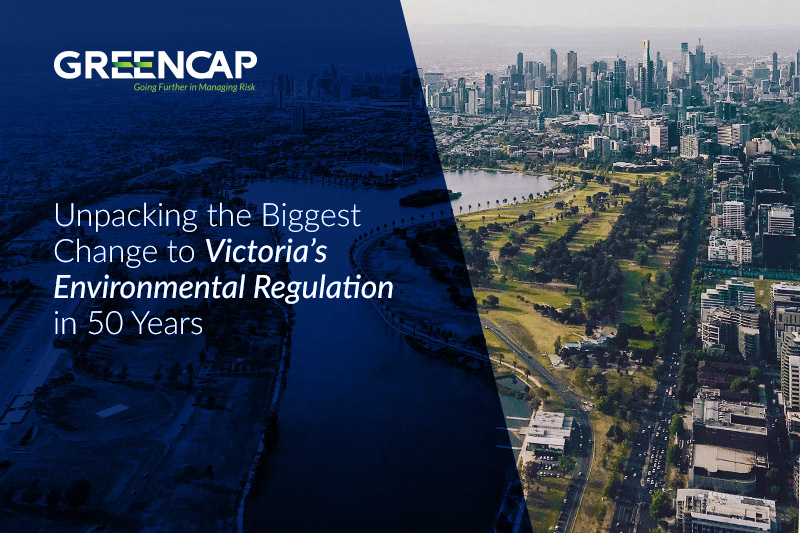Victorian Environment Protection Act - Construction Industry
Victoria’s new environment protection legislation, the General Environmental Duty (GED) commenced on 1 July 2021. A key update is the General Environmental Duty (GED) which applies to all industries and businesses, as well as other duties, will change the way the construction industry manages waste and environmental impacts, such as contaminated soil.
Greencap is now part of WSP
The construction industry may cause waste and pollution, for example in demolition and clearing services. Our health, land quality, seas and oceans and water quality can all be affected by this, and runoff from construction sites that goes into waterways.
Complying and staying ahead of the new laws that came into effect on 1 July 2021 is essential for those in the construction industry. Reporting, inventory, classification and disposal of materials are all affected, and this has resulted in changes to how the industry has been acting previously.
"It is a requirement to prevent or minimise harm to people and the environment from pollution and waste. This includes assessing environmental risks, identifying controls and providing training to staff on the controls to minimise risks."
Ongoing vigilance will be required by business owners, project managers, supervisors, and workers alike.
Where in construction-specifically does the GED apply?
- Waste soil
- Waste classification
- Contaminated land
- Reused materials
The duty to manage contaminated land applies to what you know about contamination on land you manage or control (e.g., as a principal contractor).
You may have existing information about contamination on the land you manage or control. You should also investigate when you suspect contamination from things such as:
- activities you’ve undertaken, or incidents such as spills
- past use, such as manufacturing or mining activities, and storage of chemicals or waste.
It’s important to identify potentially contaminated sites because they can cause harm to human health and the environment.
What you know, or should reasonably know, about land and contamination can also change over time. To meet your duty to manage contaminated land, you may need to engage an expert for advice.
You can comply with this duty by:
- identifying contamination you suspect is present
- investigating and assessing contamination, with professional help
- providing and maintaining measures to minimise risk. This may include a cleanup to make the site suitable for its current use
- providing information to others to whom the contamination may affect, where sharing that information will help control the risks.
The EPA has released Assessing and controlling contaminated land risks: a proposed guide to meeting the duty to manage for those in management or control of land (publication 1977).
![]() On-Demand Webinar:
On-Demand Webinar:
- Unpacking Victoria's New Environment Protection Act (3 June 2021)
![]() Helpful Links:
Helpful Links:
- EPA - General Environmental Duty (GED)
- EPA – 1820.1: Construction – guide to preventing harm to people and the environment
- EPA - 1977: Assessing and controlling contaminated land risks: A guide to meeting the duty to manage for those in management or control of land
 Frequently Asked Questions - Construction
Frequently Asked Questions - Construction
How does adhering to the Victorian Environmental Regulations impact my construction project?
All aspects of a project that have the potential to affect human health or the environment must be considered for their level of risk, and how that risk will be controlled to either eliminate or reduce the risk as far as reasonably practicable.
How can Greencap help my construction business in further understanding the Victorian Environmental Regulations?
The EPA has prepared a number of resources available on their website and in particular have developed a publication (EPA Publication 1834) that provides specific guidance to the civil construction, building and demolition industry.
Greencap can help decipher the EPA’s industry specific expectations for individual business circumstances.
What information should every construction business be aware of regarding the Victorian Environmental Regulations?
EPA Publication 1834 is an excellent starting point to provide a general understanding of the duties that are likely to impact construction businesses. It is important to know that EPA’s response to compliance with the new laws will be proportionate to the size of the business as per their Statement of Regulatory Intent (EPA Publication 1965).
It is also important to understand that the ‘state of knowledge’ regarding expectations to manage risk is always changing. Hence keeping up to date through industry groups and subscribing to EPA business updates and Greencap’s own news feed is very important to ensure continual compliance with the law.
How do I know when waste tracking is required?
All waste from a construction, building or demolition site is industrial waste and must be classified before planning disposal to ensure it is transported lawfully to a lawful place. EPA has produced a publication on how to classify waste (EPA Publication 1968). If the waste is classified as Reportable Priority Waste, it must be tracked using the EPA’s online waste tracking system via their website including the use of an app for smart devices.
Is waste soil classified differently to all other wastes?
Yes, all soil categories above the upper thresholds for Fill are deemed reportable priority waste and must be tracked. All soil waste has category definitions including ‘Fill’ and ‘soil containing asbestos’ are found in EPA Publication 1828.2
Will the retention and containment of Category D waste soil require an EPA permission?
Yes, Category D waste soil requires permission from the EPA in the form of a permit to allow retention and containment the soil on a project site.
Can I mix, blend, or dilute my construction waste to change its category?
No, unless EPA provides a designation.
News - Victorian Environment Protection Act
Greencap acknowledges the Traditional Owners of Country throughout Australia and recognises their continuing connection to land, waters and culture. We pay our respects to their Elders past, present and emerging.



